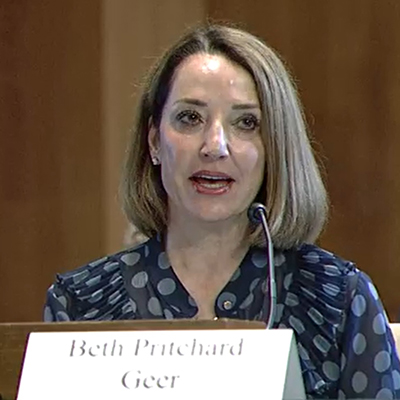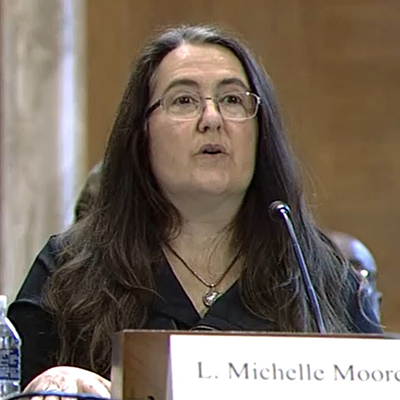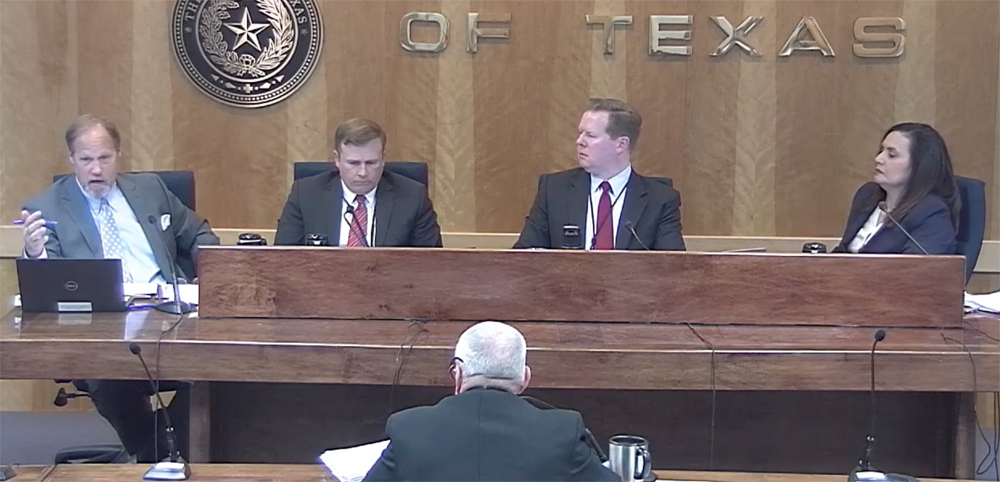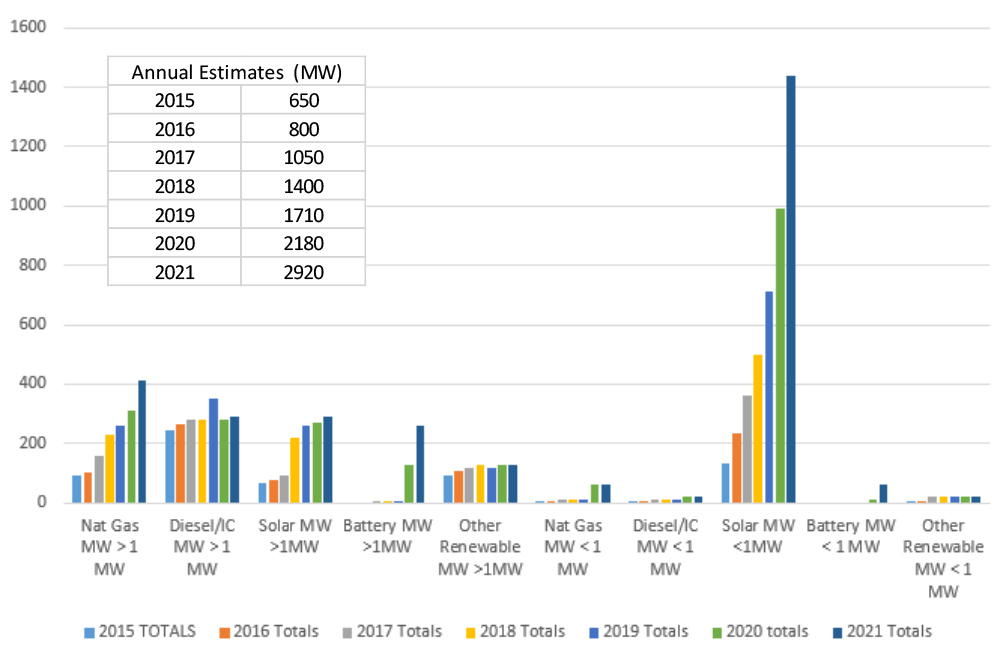Nominees to the Tennessee Valley Authority’s Board of Directors stressed affordable rates and a more robust renewable portfolio for the federal utility during their confirmation hearing Tuesday.
Beth Geer, Robert Klein and L. Michelle Moore appeared before the U.S. Senate Committee on Environment and Public Works about a year after they were nominated to the TVA’s board by President Joe Biden. Also sitting before the committee was Ben Wagner, a longtime employee in TVA’s office of the inspector general who has been nominated to serve as the federal utility’s next inspector general.
Committee Chair Sen. Edward Markey (D-Mass.) opened the hearing by saying TVA could do more to provide innovation, low-cost power, environmental stewardship, and reduce its 10 million customers’ energy burdens.
Markey said TVA could substantially expand its generation portfolio’s 3% share of wind and solar, both at the utility scale and the distribution level. He called the 3% share a “very sad number.”
“It’s almost as though it’s still the 1930s and there hasn’t been any real progress in terms of the implementation of real change,” Markey said. “Unfortunately, the TVA has pushed, for several decades, more fossil fuel energy at the expense of potentially cheaper renewable sources, which pollutes our communities and exacerbates energy burdens for TVA customers, who already pay some of the highest electricity bills in the nation as a percentage of household income.”
 TVA nominees (from left) Beth Geer, Robert Klein, L. Michelle Moore and Ben Wagner | U.S. Senate Committee on Environment and Public Works
TVA nominees (from left) Beth Geer, Robert Klein, L. Michelle Moore and Ben Wagner | U.S. Senate Committee on Environment and Public WorksMarkey said the trio of nominees are well-positioned to prudently influence the utility’s energy planning for years to come and provide customers with “reliable, clean and affordable” energy.”
However, ranking member Sen. Jim Inhofe (R-Okla.) said “calls to eliminate fossil fuels from the power sector are foolish and would be devastating for the American people by increasing already sky-high utility bills and creating greater unreliability for the electric grid.”
He said the nominees must recognize the ongoing need to maintain fossil fuels as part of TVA’s power supply.
“The TVA must not be weaponized to pursue a radical, Green New Deal-inspired agenda that forgoes reliability and affordability and fossil fuels for its power supply in the name of climate alarmism,” Inhofe said.
He also criticized the slate of nominees for not including anyone from Kentucky or Mississippi.
The TVA Act prescribes that seven of the board’s nine members be residents of the TVA service area and that their residences be geographically diverse across the footprint. The current board contains members hailing from Georgia and Tennessee; the nominees also come from those two states.
TVA’s current board is at quorum with five of nine seats filled. However, two directors’ terms expire in May. The utility’s bylaws allow board members to stay on through the end of the year to maintain quorum if replacements have not been confirmed in time.
The current board includes Chair William Kilbride, whose term expires in 2023; A.D. Frazier and Jeff Smith, whose terms expire this year; and Beth Harwell and Brian Noland, whose terms expire in 2024. If the nominees are confirmed, the board will have three women instead of one, but no one of color.
“The financial success of renewable energy is something I observe daily in my current work, and it’s why the sustainability revolution may now be the most significant investing and business opportunity in the world,” Geer said in her testimony. “Sustainability does not just make sense for our environment; it makes good sense for economic progress.”
Geer, a Tennessee resident, is chief of staff to former Vice President Al Gore and serves on Nashville’s Sustainability Advisory Committee.
“Let me say that while I have worked in the political realm at many points in my career, I firmly believe that doing what is best for all the people of the Tennessee Valley is what matters, and that is, at the end of the day, a non-partisan issue,” she said.
Geer said she shared Markey’s concerns with TVA’s relatively small deployment of wind and solar.
Ernst Objects to 2015 Tweet
Sen. Joni Ernst (R-Iowa) said she will oppose Geer’s nomination over a 2015 Twitter comment she made in response to a Fox News tweet featuring an image of Ernst and a quote from her State of the Union response. Geer responded “hideous” to the tweet, which asked, “What did you think of Sen. Joni Ernst’s GOP response to the State of the Union address?”
Ernst asked Geer to explain herself, saying, “You believe one reason you should be confirmed to serve in the TVA, the Tennessee Valley, is because of your ability to quote, ‘build relationships and work together,’ end quote. Is that correct?”
 TVA board nominee Beth Geer | U.S. Senate Committee on Environment and Public Works
TVA board nominee Beth Geer | U.S. Senate Committee on Environment and Public Works“Well, I apologize if I offended you, and I appreciate you bringing it to my attention,” Geer said. “And I do, in fact, believe that civility is key, and I’m sorry that I did not demonstrate that, in your opinion, with that tweet.”
Klein, a former lineman at the Electric Power Board of Chattanooga and member of the International Brotherhood of Electrical Workers, said TVA’s status as a government-owned public utility poises it “to be a leader in technology and innovation for the nation, allowing the United States and the Southeast, in particular, to contribute to our collective goals of decarbonization.”
Klein said if confirmed, he would support carbon reductions and “look for projects that could potentially lead the way in further reductions.” He said he was particularly interested in TVA’s exploration of a small modular nuclear reactor near Oak Ridge, Tenn.
Klein also said he was committed to exploring new renewable energy additions to TVA’s fleet.
Moore, a former sustainability staffer in the Obama White House and CEO of solar nonprofit Groundswell, said “energy and environmental quality go hand in hand in hand with fiscal responsibility” and pointed to her work in helping build a market for green buildings that use less energy and water.
She recalled a childhood in which her grandparents would rack up “backbreaking” $300-$400 energy bills because they were forced to turn on their furnace periodically during Georgia winters to keep their inefficient house’s pipes from freezing.
Ranking member Sen. Shelley Capito (R-W. Va.) grilled Moore on a 2018 tweet on her now-private, personal twitter account where she wrote, “Oil is like opioids, it keeps you sick and poor.” Capito asked how Moore would square her opinions with TVA’s 40% fossil fuel energy portfolio.
 TVA board nominee L. Michelle Moore | U.S. Senate Committee on Environment and Public Works
TVA board nominee L. Michelle Moore | U.S. Senate Committee on Environment and Public WorksMoore said while she was grateful for fossil fuels powering the Industrial Revolution and helping to lift families out of poverty, it’s time to move forward with clean energy and new technologies. She said she envisioned battery storage having a bigger role in TVA’s portfolio and said she will make sure that as TVA’s decarbonization plays out, communities with fossil plants will be supported.
Late last year, the five-member board voted to give TVA CEO Jeff Lyash more discretion over utility decisions, including replacing output from the Cumberland and Kingston coal plants in Tennessee. TVA is currently exploring building pipelines and two new natural gas plants at the sites, a move the Sierra Club opposes.
TVA’s emissions goals and renewable generation plans are currently the focus of an inquiry by the U.S. House of Representatives’ Committee on Energy and Commerce. The committee is questioning whether the utility is doing enough to keep rates affordable and invest in renewables and energy efficiency. (See TVA Defends Rates, CO2 Reduction Plans in House Inquiry.)
Before the inquiry, several nonprofit groups said TVA needed a stronger decarbonization plan than its current 2050 goal.
Wagner is a 31-year veteran of TVA’s inspector general’s office, where he served as an investigator and auditor until his retirement in 2017. Before that, he worked in TVA’s nuclear power segment.
Wagner committed to performing program reevaluations of TVA’s audits and investigations to determine possible process improvements.
All nominees agreed to Markey’s ask to pay close attention to TVA’s coal ash dumps. Markey also asked that nominees pledge to place emphasis on energy efficiency measures.
The committee will vote on the nominations in the weeks ahead. A full Senate vote will follow.
The hearing comes as TVA risks losing the largest of its 153 power company customers, Memphis Light, Gas and Water (MLGW), over affordability concerns and low renewable energy investment. MLGW and a third-party contractor hired to oversee a request for proposals are currently evaluating 27 bids for alternative electricity supply, including one from MISO.
The city utility has previously said it will release a short list of finalists and invite the companies to prepare presentations this summer. After that, MLGW plans to request final offers and potentially award a contract in December.

